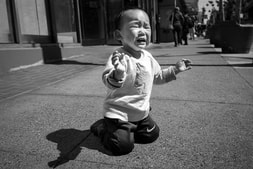|
11/24/2019 2 Comments Understanding IEP Assessments If your child has an IEP, you are probably familiar with the anxiety that often accompanies IEP assessments. My experience as an Educational Consultant, Autism Coach and Autism Parent gives me a window into the IEP process that helps you see it clearly. Your anxiety will be quelled when you know what I know... What is an IEP anyway? The initials stand for Individualized Education Program, both a document and a process for educating students with disabilities. The process is described and governed by our nation’s special education law PL 94-142 (1975), renamed in the 1990’s as IDEA (Individuals with Disabilities Education Act). The primary purpose of IDEA is to ensure that all students with disabilities have available to them a free and appropriate education designed to meet their unique needs. Why are children assessed for special education? The IDEA includes the Child Find Mandate, requiring all school districts to identify, locate, and evaluate all children with disabilities, regardless of the severity. Students with suspected disabilities should be assessed in all areas to determine eligibility for services and to determine their educational needs. The Initial Assessment Sometimes, a school identifies that a child may need a special education assessment. However, as a parent, you can also make a request for assessment in writing. Both initiate the Initial Assessment process for special education. If a parent requests an assessment and the school believes that an assessment is not in order, they can respond with a letter stating such (Prior Written Notice). However, the school typically responds to the written request with an assessment plan. The clock starts ticking because the parent has 15 calendar days to respond to the school’s plan. Once the parent submits the signed assessment plan and it is received by the school, the school is required to complete this initial assessment within 60 days and hold a meeting to review test results. Based on the meeting and assessment findings that identify the student’s special education needs, parental consent is then required to initiate appropriate special education services. What happens during the assessment? A student is assessed by a wide variety of tools that measure several aspects of the student’s learning: Psycho-educational; Academic; Health; Speech-Language; Occupational Therapy; Adapted Physical Education; Functional Behavior Assessment; Supplemental Support Assessment, etc. The assessments are performed by individuals who are competent to execute them: School Psychologist, Speech-Language Pathologist, Special Education Teacher, School Nurse, and other such professionals. The assessments are provided in a student’s primary language. In addition, they are recognized as unbiased assessment tools yielding results that have been found to be reliable and valid over time and across varied school environments. What makes a child eligible for Special Education? After the assessment data has been reviewed, the IEP team also reviews the student’s present levels of performance (PLOP) in all areas (reading, writing, math, communication, motor skills, social-emotional, etc.). Next, the team determines appropriate goals to address the particular unique needs of the child. Lastly, the IEP team identifies the specific category where the student meets eligibility. There are currently thirteen Special Education eligibility categories listed under IDEA, including these: Autism; Specific Learning Disability; Other Health Impaired; Hearing Impairment; Visual Impairment, Intellectual disability, and Speech-Language Impairment. Remember, an eligibility category does not serve as a medical diagnosis. However, it does assist in describing a student’s current unique challenges so that they can receive the appropriate supports at school. Triennial Evaluation To ensure a continuation of appropriate special education services, a thorough Triennial Evaluation is conducted regularly, as described in IDEA. It requires that students be re-evaluated in all areas of suspected disability at least every three years (i.e., triennial review) to determine eligibility and students’ educational needs. The process for this Triennial Assessment is similar to the Initial Assessment:
Upon being notified of your upcoming IEP meeting for the Initial or Triennial Assessment, parents can request copies of all assessment reports and the DRAFT IEP one week prior to the IEP meeting. Assessments can be complex to read, so request support from experienced friends and professionals as you review results, making notes and documenting your questions. What should parents look for in a quality Assessment report?
Key Points to Remember about IEP meetings:
Parents, you are your child’s best advocate! Trust your gut as you participate in your meetings and discussions and take time to review the results. Most importantly, remember that every child can learn in his or her unique way. I hope that this information has helped minimize anxiety as you approach the IEP assessment process for your child. Remember to enlist support along the way from professionals and knowledgeable friends as you advocate for your child. References: Thank you to our writing consultant, Betsy Hamblin! Additional resources: Parents Rights in CA; Wrightslaw book
2 Comments
 Have you ever had a moment when your child did or said something awkward in public? Then, the response from people around you was less than favorable? How did you respond? A situation such as this happened for us recently. As a result, I had an “ah-ha” moment, as an Autism mom, ally, and advocate. Recently, we were attending a community festival. My daughter “Amazing Grace” initially chose to play in a jumpy house area made for younger children (0-5) instead of the larger and more challenging jumpy obstacle course made for children her age (6 years +). After a while, I encouraged Grace to try the other area which was more age-appropriate. I could feel the eyes of the person monitoring the jumpy. I imagined that she wondered, “Why does this 8-year old want to play in this small jumpy?” and “Why is she having such a hard time leaving upon request?” At this moment, I realized that I had two options: I could become upset or offended or I could use this as a teachable moment. On this day, I chose the latter. I began to inform the jumpy monitor about Grace and her unique challenges related to Autism. The young ride operator was very grateful, as she had no understanding or knowledge about Autism Spectrum Disorders (ASD). After giving Grace a 5-minute countdown, she was able to transition to the larger and more challenging jumpy obstacle course. She had a blast! She slowly built her confidence and was able to successfully navigate the play area along with her peers. (The next challenge was getting her to leave this play area 😉) The incident at this festival is just one example of how we can turn those awkward moments into teachable moments. As parents and allies, we want everyone to embrace Autism…moving from awareness to true acceptance. However, some people are truly ignorant when it comes to the challenges and great strengths of our kids and young adults. How can we expect the world to know more and make better choices if we don’t educate them? This is my epiphany, although the implementation is a work in progress…. Parents let’s continue to advocate strong for our kids with unique needs. If not us, then who?  Do you ever wonder what goes on in your child’s mind? Or, if you are parenting a teenager, maybe you don’t want to know...I think every parent wonders what their child is thinking at times, especially when they are infants or toddlers. However, for the Autism parent, this feeling happens much more often and for a longer time span...maybe throughout their childhood or even into adulthood. I can remember working with a family once and the mother told us a devastating story at her son’s IEP (Individual Education Program) meeting. She shared that her greatest concern for her son was for him to be able to tell her about his feelings. Her son was an eight-year-old at the time who was significantly impacted by Autism and minimally-speaking. One night, when helping him with his bath, this mom noticed that her son had a terrible scratch on his leg that looked as though it had happened that day. He winced as she tended to his injury. This mom realized that her son had been injured somehow that day and was unable to tell her that he was sad, hurt, or in pain. She cried as she told us this story at the IEP meeting, and inside I cried for her, too. This was many years ago, before my own daughter “Amazing Grace” was diagnosed with Autism Spectrum Disorder. Language and communication are one of the hallmark areas of challenge for individuals with Autism. This can manifest differently from one person to another. It can be as significant as being unable to tell someone that you are hurt. However, for individuals less impacted by Autism, many still struggle to effectively discuss their feelings and the feelings of others. Though their academic vocabulary may be strong, beyond their peers, many individuals with Autism have a very immature emotional vocabulary. I recently had a moment with my daughter that typifies this concept. For several years, Grace has expressed her distaste for me when I coo and “talk” to babies that we see in stores, at parks, etc. She has mentioned to me that I should not talk to babies as that is “not my business”. However, recently when this situation occurred, Grace was able to use words to explain to me her truefeelings for the first time. She told me that when I engage with babies, she feels “sad and unloved” and she further asked “Mom, you do still love me…right?” My heart sank to think that Grace felt this way, while also feeling relief because I finally knew what had been bothering her all this time. What can we do to help? If your child with Autism struggles to share their ideas, thoughts, wants, or needs, here are a few ideas to help…
One of the greatest challenges in parenting a child with Autism Spectrum Disorders is the struggle with communication. However, with persistence, patience, and love, it is possible to effectively support our children while helping them find their voice. References: autismspeaks.org 3/16/2019 1 Comment 3 IEP Tips for Parents When you hear the word IEP, what do you think? A bunch of fancy words that you don't understand? Another opportunity to hear about how well your child is not doing at school? Do not fear fellow special needs families. There is HOPE! When I hear the word IEP (Individual Education Program), I think "Here is a great opportunity to develop and monitor a plan specifically for my child's success!" Now where, you may ask, does my optimism come from? Well, after twenty years of working in special education in the public school system and five years of attending IEP meetings for my own child, I have learned a few things. Let me share a few tips with you... 1. Start with the end in mind. Remember that the ultimate purpose of your child's IEP is to prepare them for "further education, employment, and independent living”. Even as early as preschool, we need to keep this in mind as we develop goals and plan for the future. 2. Document, document, document. As quoted by one of the leading authorities on special education law and advocacy, "if it isn't written down, it didn't happen" (Pete Wright, wrightslaw.com). Documenting your conversations and concerns is the best way to keep IEP teams accountable. In addition, this will help you to streamline your efforts in monitoring progress and may save your sanity. For example, when you pick up your child from school and chat briefly with your child's teacher about a problem behavior that arose that day, you may want to follow up with a quick email to recap the conversation. If the behavior becomes a recurring issue, you'll have documentation to review to help you help your team in developing smart solutions. 3. Don't go it alone! If at all possible, always attend an IEP meeting with someone. The law allows you to invite individuals who have knowledge or special expertise about your child. As the parent, you get to decide who meets this criteria. You may invite one of your child's private therapists, your Regional Center case worker, or your parent as an example. Having another set of eyes and ears present at an IEP meeting relieves you of pressure and allows you the freedom to listen and absorb the information. So, the next time you hear the term IEP, don't be afraid. Remember that an IEP is an excellent opportunity for you to make a positive impact on your child's academic progress. Document everything as much as possible and enlist your support network for assistance. References: https://sites.ed.gov/idea, wrightslaw.com, understood.org 6/22/2018 2 Comments Autism Myths Uncovered In 1943, Dr. Leo Kanner first described Autism as related to children in the U.S. At the same time, Austrian pediatrician Hans Asperger was working with and learning from children in his country. Asperger's syndrome (referred to as a milder form of Autism) was named after him. From that time until now, much has been discovered about Autism Spectrum Disorders (ASD). However, myths continue to surround this condition which adversely impact children and families. Let's discuss and hopefully dispel three myths related to Autism... 1. Girls don't have Autism... So, as the proud parent of a wonderful young lady with Autism, I must say that this is definitely a myth. However it is true that statistically, boys are more often diagnosed with Autism when compared to girls. The ratio is about 4.5:1. Another factor impacting girls is severity of impact. Girls with more significant challenges (very limited speech, multiple repetitive behaviors, obvious behavior differences) are usually diagnosed as young children. However, girls with "high-functioning" Autism or "Asperger's syndrome" may not be identified until their teen or adult years. Why, you might ask? Likely because some symptoms of Autism are overlooked in girls as they may be seen as "typical girl behavior" if not investigated in depth. These include: allowing other girls to guide and speak for her at school, being quiet/shy, passivity in group settings, separation anxiety and limited conversation skills. 2. All individuals with Autism have a special skill... If you are 40 or older, then you'll probably remember the 1980's movie Rain Man starring Dustin Hoffman. This was one of the first U.S. movies bringing attention to Autism. However, as a result I believe that it has also perpetuated the myth that all individuals with Autism have a special gift, a savant-like quality that comes naturally without any formal training. Maybe phenomenal piano skills or the ability to memorize maps instantly. Here is what research suggests: Only 10% of individuals with Autism have some savant abilities as compared to only 1% of the general population without Autism. These abilities range from “splinter skills” to superb savant skills. Typically, these skills are seen in math calculations, memory, art or musical ability. In our experience, our daughter has an amazing memory. She can remember events, names of people and experiences from long ago that most of us in the family have forgotten. However, I would say that this is a "splinter skill" and not a true savant-like ability. 3. Individuals with Autism do not like to engage with others... It is true that individuals with Autism often prefer solitary play and struggle to interact with others at the same level as their "neuro-typical" peers. We noticed this early on in our daughter "Amazing Grace". At age three, she would easily spend time playing by herself and would not seek interaction with us, except when she had a need (such as food or toileting). However, although the amount and quality of their engagement is definitely different, I believe that most individuals with Autism do have an interest in social interaction. Two factors that impact their engagement with others are 1. special/restricted interests and 2. limited perspective taking skills. First, individuals with Autism typically have an area of special interest that takes much of their thought and energy. These interests may result in limited time or energy available for engaging with others. Also, the individual with Autism may find it as a "waste of time" to interact with those who don't share their special interest. This does not mean that they do not want friends or social interactions. It just means that they would prefer it on their terms so that the interactions are meaningful. Theory of mind or "perspective-taking" skills also impact an autistic individual's ability to interact with others. If you have difficulty understanding what people are thinking and why, then interacting with them can be very challenging and overwhelming. As a result, many individuals with Autism shy away from social interactions for fear of not understanding something or making a mistake. Let's erase Autism myths...let's support children and families with early identification, intervention and most of all, acceptance. Thanks for reading and sharing! References: Interactive Autism Network (www.iancommunity.org); Roger Ebert's review of Rain Man (https://www.rogerebert.com/); Autism Research Institute (https://www.autism.com/)  Have you had "the talk" with your child? I am referring to a discussion about your child having Autism 😉. Many Autism parents like myself begin to contemplate having "the talk" as our children enter the mid years of elementary school. Others wait until adolescence or young adulthood. Let's briefly discuss the pros and cons... Pros: Disclosing to your child can be empowering for them. It can help them make sense of their known strengths and challenges. Disclosure can also support your parent/child relationship. Many individuals diagnosed with Autism as adults report feeling resentful towards their parents initially because their parents did not address the issue early on. Cons: Disclosure could initially evoke feelings of fear, anger or sadness. Also, older children could begin to use the diagnosis as an excuse for certain behaviors. Tips:
As you already know, each child with Autism is an awesome individual, to say the least. That being said, what works for one child or family may not work for yours. As you contemplate talking to your child about Autism, be encouraged! Trust your gut and make the decisions that work best for your child/family. Remember that clinicians and fellow Autism parents like myself are here to assist. Feel free to reach out for more information... References: Indiana Resource Center for Autism (www.iidc.indiana.edu)  Are meltdowns common at your house? It has definitely gotten better for us now that my daughter is seven. But, when she was younger, we experienced our fair share of meltdowns. These extreme reactions to small problems are typical for children on the Autism spectrum. Why? Likely due to challenges with emotional/self-regulation. Emotional regulation is the ability to monitor and control our behavior or emotions and adjust them based on the situation. For example, when we are well regulated we can cheer ourselves up when we’re sad and calm ourselves down when we’re upset. So, why do our kiddos with Autism struggle so much in this area? One reason is that individuals with Autism typically have challenges with executive functioning skills. These skills are controlled by the frontal lobe of the brain and help us to use past information to make action in the present. Executive function skills include: shifting attention, flexible thinking, inhibiting emotions and organizing/planning. Individuals with Autism also tend to have poor working memory skills and sensory sensitivities. The combination of these challenges makes it very hard to navigate the requirements of daily life and stay emotionally regulated. What can parents do to help? 1. Observe your child: Simple, but not really. Without intervening, watch how they handle the daily stressors of life. What behaviors are they currently using to cope? This will be helpful to know as you assist them in developing a plan for using more productive and "expected" behaviors. 2. Size of the Problem: Discuss the daily problems that your child typically experiences as a "range", like from 1-10. For example, a broken pencil is a 1. We have control over this situation by simply getting a new pencil. But a broken leg may be an 8 or 9. We have little control over this situation once it has happened. We must depend on others and time to help. Typically, our children with Autism go from 0-10 when problems occur without understanding the gray area in between. Also, we can discuss the expected reactions for different size problems. For example, if you break your pencil it is expected that you will just choose a new one. Crying, screaming or yelling would be unexpected in this situation. Michelle Garcia Winner has developed awesome materials to assist with teaching these concepts, found at socialthinking.com. 3. Zones of Regulation (ZOR): ZOR is a great program developed by Leah Kuypers, an Occupational Therapist (zonesofregulation.com). ZOR is a visual framework that puts words to our feelings with appropriate strategies for getting into a “good space”. 4. Social Narratives: Social narratives are short stories with and/or without pictures that honor the feelings and thoughts of the child while explicitly teaching the expected behaviors for specific situations. These stories can be developed by caregivers and clinicians with the participation of the child if possible. Carol Gray’s stories are a great example of social narratives (carolgraysocialstories.com). Over the years, we have created numerous social narratives for my daughter to help guide her through situations such as attending birthday parties and fire drills at school. Now, we keep the stories in a binder for her to review at her leisure. It is important to note, however, that social narratives should be created, discussed and reviewed prior to the target situation occurring. As for most of us, "in the moment" of the situation it may be too challenging to review strategies and successfully attain emotional regulation. Meltdowns for children with Autism are common. However, there are many strategies to help support them in building emotional regulation along their Autism journey. References: Researchautism.net; Psychologytoday.com; Education.com; www.hope-therapies.com  This month in our live webinar, we will explore A Parent's Guide Autism Across the Age Span. Let's learn together and develop appropriate expectations for our children at every stage. Come with questions, leave empowered! Our topics will include:
Our webinar will take place online within a private Facebook group created just for you and fellow parents of Autism. Prior to the event, you will receive an email with your link to the group. Within the group page you will also find handouts for the event for you to download and review in preparation for our class. Can't watch live??? No worries. You will have access to the content for up to one week after the class. So feel free to watch, comment, and/or ask questions at your convenience. Each of our parent webinars is structured, yet interactive and fun! There is also always time allotted for questions and answers. BONUS: Each attendee will receive a $50 gift certificate to be used toward any services with Sanford Autism Consulting, including: future workshops/webinars, IEP coaching, new diagnosis consultation or social skills assessments. This webinar will sell out!! Space is limited to ensure an intimate, interactive setting where questions can be answered and all attendees can be supported. Please register today to secure your spot: onlineaprilparentgroup.eventbrite.com. 3/21/2018 0 Comments Special Diets for Autism As a parent of a child with Autism, I know that we are always searching for a support, resource or strategy to help our children become the best they can be. Have you. like me, considered making dietary changes to help your child? Let's dive into the research and learn more about this topic... First of all, we must all remember that each individual with Autism is truly unique. So, what works for someone else's child may or may not work for your child. Most experts recommend a strict trial of at least three months in order to determine if a special diet will help your child. If there are no improvements after three months, you can feel secure that you have made a good effort without a major financial investment. Popular diets for individuals with Autism include:
The Gluten-free diet has been studied the most for individuals with Autism. However, more research is needed to statistically confirm the benefits. It is believed that the breakdown by-products of gluten and casein (peptides) may interact with opiod receptors in the brain, either causing or significantly increasing autistic behaviors. Studies have also shown that there are increased food antibodies (IgG and anticasein antibodies) in a subset of children with Autism who have co-existing gastrointestinal issues. Although this suggests a "gut-brain" interaction, researchers can't yet confirm the direction of this interaction. Surprisingly, gluten can currently be found in a myriad of products in the U.S. Examples of food products include: bread, cereal, pasta, cake and donuts. But, did you know that gluten can be found in many non-food products as well? Examples include: lipsticks, toothpaste, stickers, detergents and sunscreen. This is definitely something to consider when making the choice to trial a gluten-free diet. The Feingold Program is also a popular diet for children with a variety of learning and behavioral differences, including Autism and ADHD. In 1965, Dr. Ben Feingold began his studies of the link between certain foods and additives and their effect on some individuals’ behavior and ability to learn. The Feingold Program is a form of elimination diet where foods containing certain harmful additives are removed and replaced with similar foods that are free of those additives. When starting the Program, certain foods and non-food items containing an aspirin-like chemical called salicylate are also eliminated, and later tested for tolerance. Recommendations The best recommendation again is to know your child, trial changes consistently for a short time and monitor for any benefits or side effects. It is also best to work with an experienced nutritionist, dietitian, or clinician if possible with experience in Autism. References
 The call…”Mrs. Sanford, there has been an incident at school.” My heart sinks as I hear that my six-year old child with High-Functioning Autism has been the target of bullying by her peers. We immediately convene multiple meetings to address the issue and to ensure that this type of behavior does not happen again. In recent years, incidents of bullying in various degrees have filled our news and social media venues. In an article from 2000 (Counseling and Human Development), author Barry K. Weinhold stated that "bullying is the most common type of violence in contemporary US society". Statistics Research reveals that children with Autism Spectrum Disorder (ASD) unfortunately experience bullying even more than their neurotypical peers. For example, one study found that a total of 63% of 1,167 children with ASD had been bullied at some point in their lives (iancommunity.org). Another study found that those impacted by High-functioning Autism and/or Asperger's Syndrome were bullied more than children more significantly impacted by Autism. The Bullying-Autism Connection So, why is there a connection between Autism and bullying? 1. First, those who bully typically have been bullied themselves in some form. So, bullying others becomes a coping strategy for managing their own unresolved pain. 2. Because of theory of mind or “mind reading” challenges and social skill difficulties, our children with ASD become vulnerable targets for bullying. For example, they typically struggle to infer the intentions of others or have difficulty reading body language and other nonverbal cues. Those who bully find it easy to take advantage of these weaknesses. How Can We Help? There are several strategies to help decrease the incidence of bullying for our children with Autism.
The reality of bullying is far too familiar to families impacted by Autism Spectrum Disorder. As a clinician and Autism parent, I have experience from two perspectives. I believe that we can and we must do more to address bullying at various levels. Let's do what we can to see change for all, especially for our children with ASD 💙 References: https://www.iidc.indiana.edu/pages/bullying-and-students-on-the-autism-spectrum https://www.iancommunity.org/cs/ian_research_reports/ian_research_report_bullying https://www.autismspeaks.org/family-services/bullying https://carolgraysocialstories.com/about-2/carol-gray/ |
AuthorCrystal Sanford, M.Ed., M.A. CCC-SLP, ASDCS is an Educational Consultant, IEP & Autism Advocate and Speech-Language Pathologist. She is also the host of inspiring podcasts, Thriving Special Families and Thriving Autism Families! Her passion is advocating STRONG alongside fellow Autism and other fellow parents of neurodiverse children, helping them to persistently pursue what their children deserve at school. In her free time, she enjoys gardening and spending time with her husband and two children in San Diego, CA. Archives
November 2023
CategoriesAll Amazing Grace Autism Info IEP Advocacy SAC Company Info Thriving Special Families Tips And Strategies |
Photos from Ivan Radic (CC BY 2.0), Ben Taylor55, Oregon State University, C. VanHook (vanhookc), Rod Waddington, bobobahmat, Ivan Radic, marcoverch, Szhlopp, quinn.anya, bennylin0724, Gamma Man, Lorie Shaull, vhines200, davidstewartgets, truewonder, wuestenigel, ecosistema urbano, Phil Scoville, Our Dream Photography (Personal), Alexander king79, Dick Thomas Johnson








